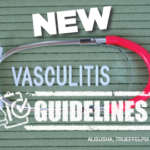This issue of having relatively lesser amounts of level A evidence is not limited to rheumatology, but affects other specialties as well. For example, the levels of evidence available to rheumatologists are roughly equivalent to the levels of evidence available to be used in infectious disease and kidney guidelines.14-15 In other specialties, such as cardiovascular disease, this may be less of a problem, because they often get more research funding.
“It’s not shocking that in a medical discipline that addresses rare diseases and has limited public funding that you’re not going to have predominantly level A evidence—and it’s not unique either,” explains Dr. Caplan. “The same could be said of all medical care—particularly subspecialty care—that you never have the evidence base that you’d like.”
Ideally, the process of guideline formation itself could be used to help shape the research agenda, & guidelines do usually contain recommendations for future research.
Improving the Evidence Base
The broader question remains as to how the evidence base for the guidelines might be improved through greater research. Although RCTs remain unrealistic in many scenarios in rheumatology, an improvement in the number of high-quality observational studies could also help improve the evidence base. In many cases, registry data may be studied, such as were used in analyses of ankylosing spondylitis patients switching TNF-α inhibitor therapy as part of routine clinical care.19
Ideally, the process of guideline formation itself could be used to help shape the research agenda, and guidelines do usually contain recommendations for future research. But Dr. Neogi notes that companies are usually not interested in funding studies that will not influence whether or not their product will be used. She also notes that commercial companies are not typically interested in funding needed studies that may determine the optimal use of older, existing generic drugs.
She adds, “This has to be a priority for NIH and other funding sources. Yes, our hands are tied, because this is the evidence that is out there. It’s a call to action to see if we can convince funders to help us address these important questions.” She believes that the state of treatment guidelines in rheumatology regarding the level of evidence is simply reflective of what investigators, funders and industry have deemed important to study in RCTs. She notes, “Rheumatologic diseases have a big impact on people’s lives, and yet the funding by a variety of different organizations does not adequately reflect the public health burden of these diseases.”
Future Guidelines
Guidelines need to be updated as new data become available. Currently, the ACR employs a system of evaluating the medical literature every 12 months to see if a guideline update is warranted.



